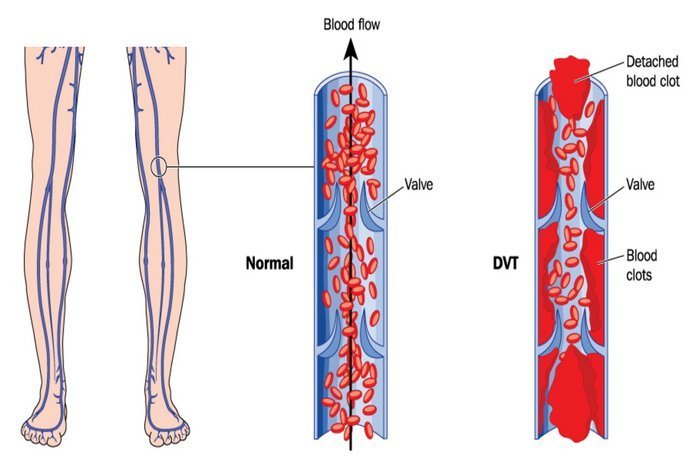Types of DVT

As discussed earlier the blood clot formation leads to the development of DVT. Mostly the DVT occurs in the extremities, where the venous return affected, thus causes an endothelium injury and hypercoagulability. So, categorized into lower and upper extremities DVT.
1-Lower Extremity DVT: The lower extremity DVT affect the leg and pelvis veins, where the thrombus formed and block the blood passage. It is caused by an impaired venous return, endothelial injury or dysfunction occurred after a leg or hip fractures and hypercoagulability.
2- Upper Extremity DVT: The upper extremity DVT occurs in the brachial, axillary, subclavian, internal jugular, distal and ulnar veins. It has farther divided into two kinds, primary and secondary forms. Certain syndromes such as Paget–Schroetter syndrome, disease like malignancy, devices like catheter and pacemaker in the upper body region, and also, excessive motion of the upper extremities can result in DVT.

